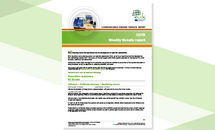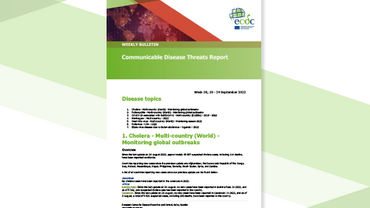Communicable disease threats report, 17-23 January 2016, week 3
The ECDC Communicable Disease Threats Report (CDTR) is a weekly bulletin for epidemiologists and health professionals on active public health threats. This issue covers the period 17-23 January 2016 and includes updates on Zika virus, Ebola virus disease and seasonal influenza.
Executive summary
This issue covers the period 17 to 23 January 2016 and includes updates on Ebola virus disease, Lassa fever and Zika.
Zika
No autochthonous cases of Zika virus infection have been reported in EU/EEA Member States this past week, with the exception of two EU Outermost Regions (French overseas departments), Saint Martin and Guadeloupe, each having reported one autochthonous case. This week, autochthonous transmission of Zika virus was confirmed in Barbados, Ecuador, Guyana, Bolivia and Thailand.
Media report the first microcephaly case related to Zika virus infection in Colombia.
ECDC published an updated rapid risk assessment on 22 January 2016.
Lassa fever
From December 2015 to 19 January 2016, Nigerian authorities have reported 218 suspected and 42 confirmed cases of Lassa fever, including 79 deaths. Lassa fever is endemic in Nigeria and outbreaks occur yearly during the dry season. The risk of importation in EU/EEA is very low.
Ebola virus disease
According to the latest WHO situation report, one new confirmed case of Ebola virus disease was reported in Sierra Leone on the 14 January. The patient had died on 12 January. Sierra Leone was previously declared Ebola-free on 7 November 2015. The Sierra Leone Ministry of Health reported on 20 January, a second EVD case in the district of Tonkolili. This patient is a relative and caregiver of the person who died on 12 January. This case has not yet been acknowledged by WHO.
The detection of a new case in Sierra Leone is not unexpected and highlights the importance of maintaining heightened surveillance in the coming months as the risk of additional small outbreaks remains.
Download






